Mobile Legends Project NEXT 2025: What’s Actually New This Time
Project NEXT 2025 Definition and Scope
So here's the situation—Project NEXT 2025 launches on September 17, 2025, and frankly, this is probably the most ambitious update MLBB has ever made. The real change isn't just the release of yet another new hero (although Obsidia is indeed very strong), but rather the annual map rotation, which includes four completely different battlefields that will randomly rotate in ranked matches.
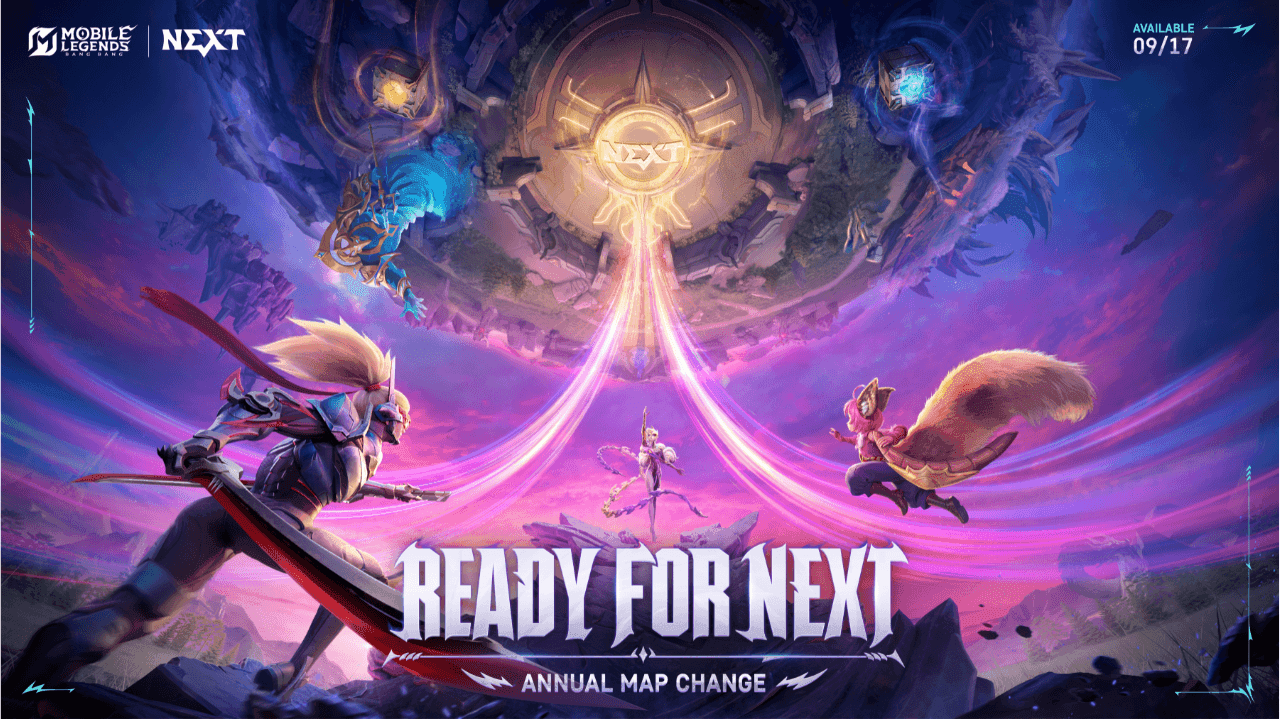
Yeah, you read that right. Random maps in ranked.
You’ll know which battlefield you’re getting during the loading screen, which means your entire strategy needs to shift on the fly. No more autopilot drafting.
For players wanting to dive into the new content immediately, obsidia mobile legends diamond top up malaysia through BitTopup ensures instant hero access without the grind. Their pricing stays competitive, and the 24/7 support actually responds - something I’ve tested personally during previous releases.
Key Features and Improvements
The quality-of-life updates are where Moonton really listened to community feedback. Control responsiveness feels noticeably smoother (finally!), and that red-flash damage feedback is way clearer now. You’ll actually see when you’re getting stunned or silenced instead of wondering why your hero suddenly stopped moving.
The Achievement System overhaul is pretty neat too - career achievements now unlock multi-tier flairs based on how you actually play, not just generic milestones.
But let’s be real: the tutorial improvements matter most for bringing in new players. Clearer UI elements and better roaming gear explanations should help reduce those why is my support buying jungle items? moments we’ve all experienced.
Release Timeline and Rollout Plan
The phased rollout continues throughout 2025 with ongoing balance tweaks - because let’s face it, no major update launches perfectly balanced.
Introducing Obsidia: Mobile Legends’ Newest Hero
Obsidia Background and Lore
Meet Obsidia, the Sovereign of Dark’s End - Hero #130 slotting between Zetian and Sora. Her backstory’s actually compelling for once: a weak elf pushed underground who accepted dark power to unify the Abyss, only to face corruption and betrayal.
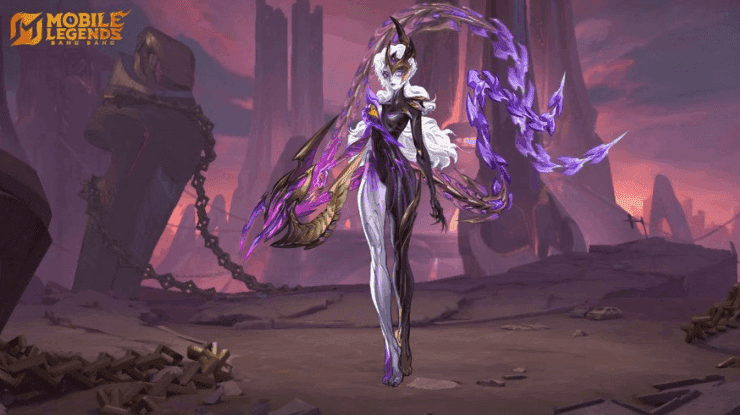
The whole merging blood with demons thing sounds edgy, but the character design pulls it off. Think obsidian aesthetics - blacks, grays, deep purples with gothic necromantic details that don’t feel over-the-top.
Her motivation? Hunting Spawns of Decay with bone shards after rejecting her god’s influence. It’s revenge fantasy done right.
Hero Role and Classification
Obsidia’s a Gold Lane Marksman built for the Finisher/Damage role. Her stats tell the story: Durability 2, Offense 7, Control Effects 1, Difficulty 4. Translation? High damage potential, moderate learning curve, but you’ll get deleted if caught out of position.
She deals Physical damage through ranged basic attacks using Mana, with standard 200% Critical Damage and 100% Attack Speed Ratio. Nothing revolutionary there, but her passive changes everything.
Need diamonds for immediate access? Mobile legends next update diamond reload malaysia players get instant delivery through BitTopup’s reliable service. I’ve used them for several hero releases - no delays, no hassles.
Visual Design and Animation Updates
The floating bone shard animations are genuinely impressive. They’ve nailed the necromantic theme without making it look cartoonish. Combat animations prioritize clarity too - you’ll always see those bone shard trajectories coming, whether you’re playing as or against her.
The gothic armor details respond dynamically to movement, which is a nice touch that shows Moonton’s improving their character design pipeline.
Obsidia Skills and Abilities Complete Breakdown
Passive Ability Analysis
Return to Bone is where things get interesting. You generate Bone Energy through damage: 1 point from non-heroes, 2 from heroes, with a 3x multiplier from skill usage. No energy from creeps though - you’ll need to actively trade.
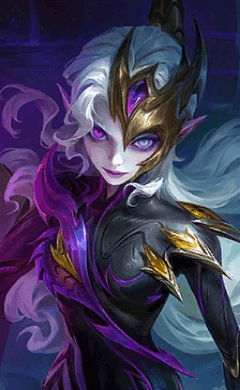
At 30 Energy, you get one Bone Shard (max 25 stored). Here’s the kicker: basic attacks trigger ALL accumulated shards to strike your target. Each shard deals 7% Total Physical Attack as Physical Damage while inheriting 7% of attack effects.
That partial inheritance is crucial - it applies to Lifesteal from Haas’ Claws or HP percentage damage from Demon Hunter Sword. Kill an enemy hero? Instant bonus shard.
Active Skills Detailed Guide
Skill 1 - Abyssal Bone Needle launches a projectile dealing 325-500 (+80% Total Physical Attack) Physical Damage. Cooldown scales from 4.5 to 3.0 seconds, making it your primary harassment tool.
Low cooldown means constant pressure in lane. Use it for wave clearing and passive generation - this skill will be your bread and butter.
Skill 2 - Phantom Shadowmeld gives you 500% Movement Speed for 0.3 seconds. Yeah, 500%. It’s brief but massive, perfect for repositioning mid-fight or escaping ganks. Ultimate enhancement extends this to 1 second with 33% cooldown reduction.
Ultimate Ability and Combos
Hunt of Bone shoots Bones of Wrath dealing 125-225 (+60% Total Physical Attack) Physical Damage, stunning the first hero hit while pulling you near them. Then it creates a tether preventing them from moving beyond 4 units distance.
The tether blocks displacement abilities and pulls you with their movement for 3 seconds. You can move through obstacles and basic attack during this time, plus you get 5 temporary Bone Shards.
This absolutely destroys mobility heroes like Fanny, Lancelot, and Joy. They literally can’t escape once tethered.
Skill Leveling Priority
Max Skill 1 first for consistent DPS and passive generation, then Ultimate for enhanced control, finally Skill 2 for positioning. The sequence: S1 → S2 → Ult → S1 → Ult → S1 → S2 → S1 → Ult → S2 → Ult → S1 → S2 → S2 → Ult → S2.
Early Skill 1 maxing gives you reliable harassment during your vulnerable early game. Ultimate priority ensures you have enhanced mobility for mid-game skirmishes.
Best Obsidia Builds and Item Recommendations
Core Item Build Path
Start with Magic Boots for that cooldown reduction - you’ll be spamming Skill 1. Rush Corrosion Scythe for stacking damage and on-hit slow, then grab Demon Hunter Sword for HP-based damage amplification. Against heavy healing comps, swap DHS for Sea Halberd.
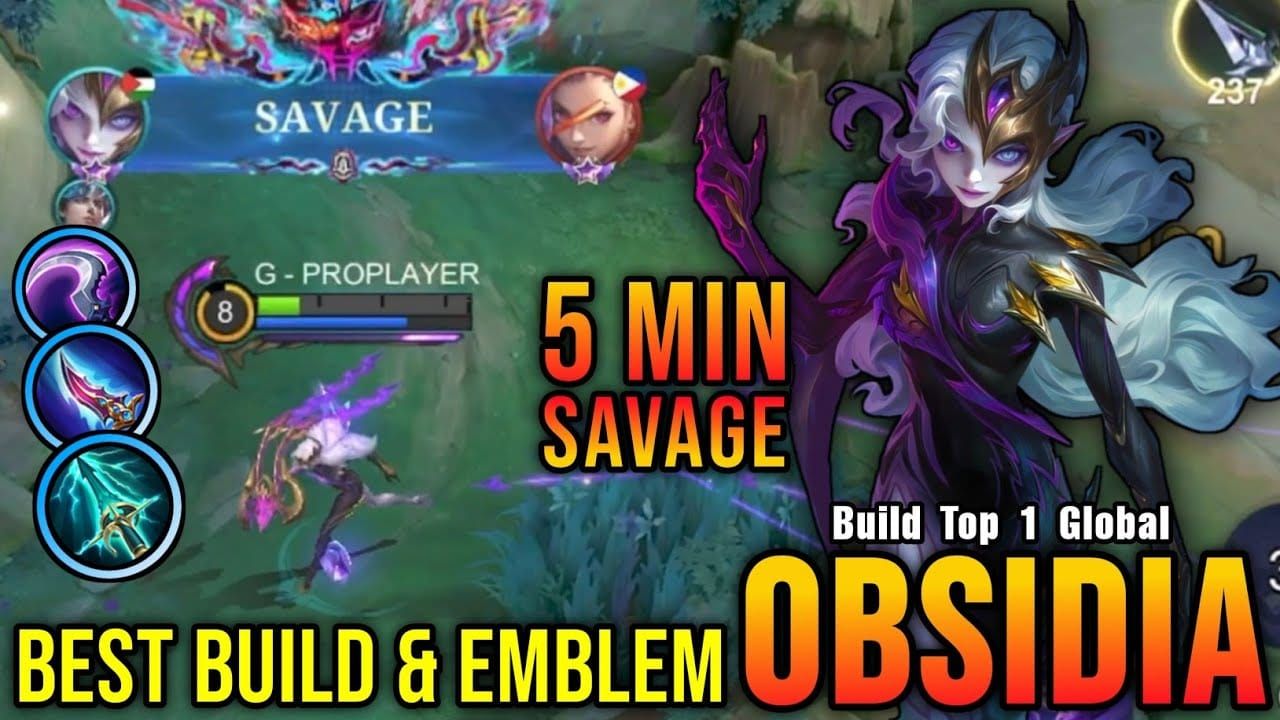
Mid-game includes Golden Staff for attack speed scaling with your passive. Late-game focuses on Malefic Gun for range extension and penetration, finishing with Rose Gold Meteor for burst protection.
When you’re snowballing hard, Blade of Despair becomes tempting. When you need sustain, Haas’ Claws works well with your shard mechanics.
Situational Items and Adaptations
Against healing-heavy compositions (looking at you, Estes + Uranus combos), prioritize Sea Halberd over Demon Hunter Sword. The anti-heal effect is too valuable to skip.
Facing burst assassins? Rush Rose Gold Meteor after your core items. That shield has saved me more times than I can count. Dominance Ice becomes valuable against attack speed-dependent enemies like Karrie or Claude.
Item timing depends on game flow - accelerate damage when ahead, prioritize defense when behind. The build path stays flexible while maintaining core synergies.
Emblem Set Recommendations
Custom Marksman Emblem with Swift (+6% Attack Speed), Weapons Master (+12 Physical Attack, +6% bonus damage), and Weakness Finder (30% Attack Speed slow, 50% Movement Speed slow for 1.5 seconds) delivers optimal performance.
This configuration provides +21% hybrid penetration early game with comprehensive combat bonuses. It’s the sweet spot for Obsidia’s kit.
Battle Spell Choices
Flicker is your primary choice - essential repositioning that compensates for limited escape options. Combine Flicker with Ultimate for surprise engagements through walls.
Sprint offers alternative mobility for extended chases. Purify becomes necessary against crowd control-heavy compositions featuring Chou, Saber, or Guinevere. Choose based on enemy draft, not personal preference.
Hero Revamps in Project NEXT 2025: Complete Analysis
List of Revamped Heroes
Three Abyss faction heroes get major overhauls: Alice, Dyrroth, and Thamuz. These aren’t minor tweaks - we’re talking reworked abilities, visual updates, and completely rebalanced kits designed to compete with newer releases.
October 13, 2025 brings additional revamps for Kimmy, Gloo, and Yi Sun-shin with comprehensive visual overhauls. The Abyss mode gets environmental updates too - scorched, jagged terrain that enhances immersion while supporting the narrative.
Major Changes and Improvements
Alice transforms into a Mage/Tank hybrid with enhanced sustain and improved team fight presence. The updated kit balances damage output with defensive utility, enabling flexible positioning while keeping her signature blood magic identity intact.
Dyrroth receives modernized abilities improving jungle clearing efficiency and team fight contribution. These updates address his previous late-game scaling issues while preserving that aggressive early-game assassination potential.
Thamuz gains enhanced durability and crowd control options, positioning him as a viable frontline option. The revamped abilities provide better engagement tools and sustained damage during extended team fights.
Impact on Hero Viability
These revamps elevate all three from situational picks to viable meta options. Alice’s hybrid role provides flexible team composition options, while Dyrroth’s improved scaling addresses those frustrating late-game weaknesses.
For the professional scene, this means expanded pick/ban considerations and new strategic combinations. It supports MLBB’s goal of maintaining roster diversity while ensuring competitive balance across skill levels.
Meta Shifts and Strategic Changes You Need to Know
New Team Composition Trends
Four new maps favor mobility and global teams that adapt quickly to varying terrain features. Dangerous Grass emphasizes ambush compositions with burst heroes like Eudora and Saber - those extra bushes create so many gank opportunities.
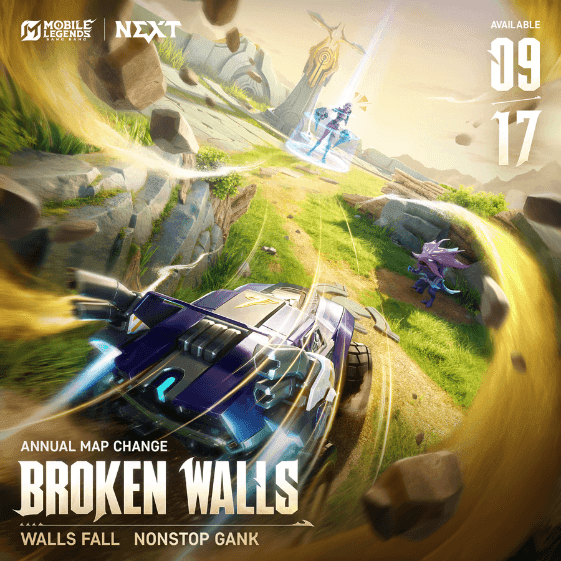
Broken Walls benefits mobility-focused lineups featuring Johnson and global presence heroes. Flying Cloud’s transportation platform enables rapid team fight re-engagement, favoring AoE and initiation heroes for elevated positioning advantages.
Expanding Rivers enhances hero mobility through current boosts, particularly benefiting heroes without inherent dash abilities. Suddenly, heroes like Layla become more viable on specific maps.
Obsidia’s anti-mobility ultimate redefines marksman positioning in team fights. You’ll need increased frontline protection while providing game-changing late-game impact through bone shard mechanics.
Lane Priority Adjustments
Gold Lane receives increased importance due to Obsidia’s scaling potential and map-specific advantages. Marksman players require enhanced protection during early game while delivering that game-changing late-game impact.
Mid Lane adaptation becomes crucial for rotating between map-specific features like bush clusters or mobility corridors. Jungle pathing modifications accommodate new terrain while maintaining efficient farm routes.
Objective Control Changes
Turtle and Lord control strategies must adapt to map-specific features like Broken Walls’ backdoor access points and Flying Cloud’s rapid reinforcement capabilities. Teams need multiple approach strategies based on battlefield selection during draft.
Early river control becomes more significant on Expanding Rivers maps where current boosts provide substantial rotation advantages. Vision control requirements increase due to expanded bush areas and new ambush locations.
Obsidia Counter Picks and Synergy Analysis
Heroes That Counter Obsidia
Chou leads the counter picks with a 52% win rate against Obsidia through fast stun-lock combinations that interrupt bone shard accumulation. His mobility and crowd control disable her positioning advantages while providing team fight initiation that bypasses her ultimate tether.

Burst assassins are her nightmare: Saber (48% win rate), Joy (55%), Guinevere (56%), and Fanny (52%) exploit her early game vulnerability and low durability rating. These heroes eliminate Obsidia before bone shard stacks provide defensive value.
Gold Lane kiters like Granger and mobile marksmen counter her limited escape options while matching late-game scaling potential. Build Dominance Ice to reduce her attack speed and healing effectiveness, while Blade Armor provides reflection damage.
Best Teammates for Obsidia
Tanks like Tigreal provide essential frontline protection, enabling safe bone shard accumulation during team fights. Their initiation capabilities create opportunities for Obsidia’s ultimate tether on priority targets while absorbing enemy burst damage.
Support heroes including Floryn offer global healing that sustains Obsidia through extended fights, while Mathilda provides mobility synergy and engage potential that complements her positioning requirements.
Fighters with crowd control like Phoveus and Fredrinn create space for Obsidia’s positioning while countering enemy mobility that threatens her safety. Their presence forces enemies into predictable patterns favoring her area denial capabilities.
Positioning and Team Fight Role
Obsidia functions as a backline damage dealer requiring careful positioning behind frontline protection. Your role involves accumulating bone shards through safe harassment before committing to team fight engagement with ultimate tether on priority targets.
Team fight execution means waiting for tank/fighter initiation, using Skill 1 for safe damage and passive stacking, then positioning for ultimate usage on key enemy carries. Late-game positioning emphasizes siege potential through long-range harassment while maintaining escape routes.
Ranked Preparation Strategy for Project NEXT 2025
Essential Practice Checklist
Step 1: Master bone shard management through custom mode practice. Focus on optimal accumulation timing and basic attack execution with multiple shards. Practice scenarios should include laning phase harassment, jungle skirmishes, and team fight positioning.
Step 2: Adapt to random map rotations by studying each battlefield’s unique features and strategic implications. Scout new bush locations, mobility corridors, and environmental advantages during loading screen identification.
Step 3: Focus on Gold Lane farming techniques for hyper-carry scaling. Emphasize safe positioning under tower protection while maintaining harassment pressure through Skill 1 usage.
Step 4: Develop counter-pick awareness for draft phase. Identify enemy compositions that threaten Obsidia’s effectiveness while recognizing favorable matchups that enable scaling advantages.
Hero Pool Adjustments
Expand your marksman proficiency beyond Obsidia to include meta alternatives like Granger, Karrie, and Wanwan for draft flexibility. Practice the revamped heroes - Alice, Dyrroth, and Thamuz - to understand their updated capabilities and interaction patterns.
Develop tank and support proficiency for team composition balance, particularly heroes that synergize with Obsidia’s positioning requirements. Study burst assassin mechanics to improve counter-play awareness and positioning decisions.
Macro Strategy Updates
Map awareness becomes crucial for adapting strategies to battlefield selection during loading screen. Develop multiple approach strategies for objectives based on environmental features like transportation platforms or mobility corridors.
Vision control priorities shift to accommodate expanded bush areas and new ambush locations across all four battlefields. Communication protocols should include map feature callouts and environmental advantage coordination.
Professional Scene Impact and Community Reactions
Pro Player Opinions
Professional players emphasize the strategic depth added by Annual Map Changes, requiring teams to develop multiple tactical approaches for varying battlefield conditions. The random selection element introduces adaptation skills as a competitive factor beyond traditional mechanical execution.
Obsidia’s introduction impacts Gold Lane meta by providing anti-mobility options that counter prevalent dash-heavy compositions. Professional teams must adjust draft strategies to accommodate her scaling requirements while addressing early game vulnerability.
Tournament Meta Predictions
Map diversity creates strategic advantages for teams with superior adaptation skills and flexible tactical approaches. Professional matches will showcase varied strategies based on battlefield selection, emphasizing preparation depth over single-strategy mastery.
Obsidia’s competitive viability depends on professional team coordination around her scaling requirements and positioning needs. Her ultimate’s anti-mobility properties provide unique strategic value against mobility-focused compositions common in professional play.
Community Feedback Analysis
Community reactions emphasize excitement for experimentation opportunities provided by map variety and hero updates. Players appreciate the strategic depth while expressing concerns about adaptation requirements for casual gameplay.
Obsidia receives positive feedback for unique mechanics and visual design, though balance concerns focus on her scaling potential and late-game impact. The revamp quality receives praise for modernizing older heroes while maintaining their identity characteristics.
FAQ
What is Mobile Legends Project NEXT 2025? MLBB's biggest annual update will go live on September 17, 2025, introducing the new hero Obsidia, annual map changes (including four rotating battlegrounds), reworked Abyss heroes (Alice, Dyrroth, and Thamuz), and comprehensive game experience optimizations.
When will Obsidia be released and how much does she cost? Releases September 17, 2025, costing 32,000 BP or 599 Diamonds. You can acquire her free through the New Hero Pass.
What are Obsidia’s main abilities and role? Gold Lane Marksman with bone shard mechanics. Her passive accumulates energy forming shards that enhance basic attacks. Skills include Abyssal Bone Needle (poke/damage), Phantom Shadowmeld (mobility), and Hunt of Bone (tether/disable ultimate).
Which heroes counter Obsidia effectively? Chou (52% win rate vs Obsidia), Saber (48%), Joy (55%), Guinevere (56%) counter through burst damage and crowd control. Build Dominance Ice for attack speed reduction and Blade Armor for damage reflection.
How do the new maps affect gameplay strategy? Four maps rotate randomly: Dangerous Grass (ambush bushes), Broken Walls (mobility shortcuts), Flying Cloud (transportation platform), Expanding Rivers (movement speed currents). Teams adapt strategies based on loading screen identification.
What’s the best item build for Obsidia? Start Magic Boots, build Corrosion Scythe and Demon Hunter Sword for core damage, add Golden Staff for attack speed, finish with Malefic Gun and Rose Gold Meteor. Use Custom Marksman Emblem with Weakness Finder and Flicker battle spell.


















